Page 333 of 352 pages « First < 331 332 333 334 335 > Last »
Copy of gravestone
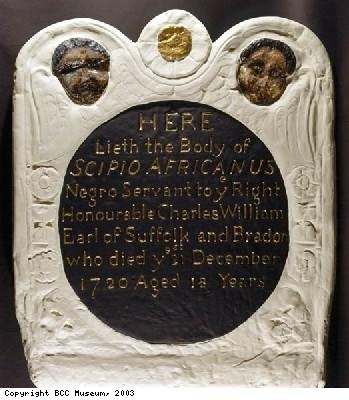
Description:
Copy of the headstone for the grave of Scipio Africanus, Henbury Churchyard. It reads, Here Lieth the body of Scipio Africanus Negro servant to y Right Honourable Charles William Earl of Suffolk and Bradon who died y 21st December 1720 Aged 18 years.
The language used to describe people of African descent in the 18th, 19th and 20th centuries is unacceptable in today’s terms. We cannot avoid using this language in its original context. To change the words would impose 20th century attitudes on history.
Creator: Henbury Church
Date: c. 1720
Copyright: Copyright BCC Museum
Muster rolls 232

Description:
SMV Muster rolls, 1748-51. 1750-51, number 232. John Quaqua / Quaco, black sailor, free man.
The muster roll is a list of all crew signed on for all or part of a voyage, which was used to calculate the money each man should pay to the Sailors Hospital Fund (insurance).
The Society of Merchant Venturers is a Bristol-based organisation, which was formed in 1552 as an elite body of merchants involved in overseas trade. The Society still exists today.
Date: 1748-51/1750-51
Copyright: Copyright The Society of Merchant Venturers
Object ID:232
Advertisement for runaway slave, Thomas
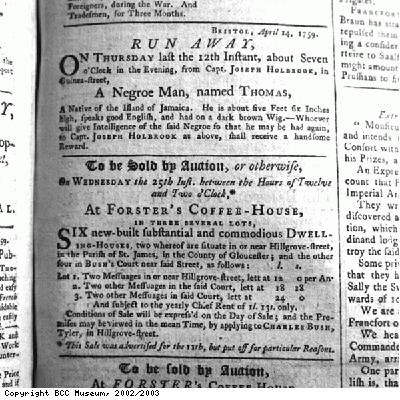
Description:
Advertisement from Felix Farley’s Bristol Journal, runaway slave, Thomas
Creator: Felix Farley's Bristol Journal
Date: 14th April 1759
Copyright: Copyright BCC Museum
RAF Airman UFG Walcott
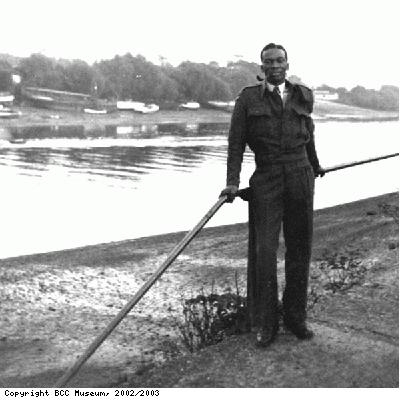
Description:
Photograph of Airman UFG Walcott, RAF Bomber Command, 1944 – 1948. Fred Walcott joined the RAF in Barbados in the Caribbean and came to Britain in 1944. After the war he worked as an engineer. He settled in Bristol, and has been active in many local societies. In 1970, he was appointed as a Justice of the Peace.
With thanks to Mr and Mrs Walcott.
Date: 1940s
Copyright: Lent to Bristol Museum and Art Gallery
Henry Parker
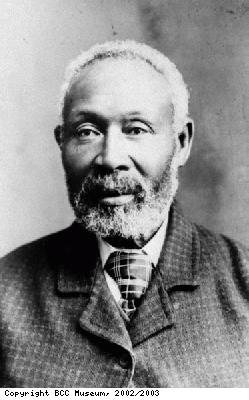
Description:
Photograph of Henry Parker, runaway slave, 1870s.
With thanks to Jenny Randall for the use of this item.
Date: 1870s
Copyright: Lent to Bristol Museum and Art Gallery
Sold Down the River
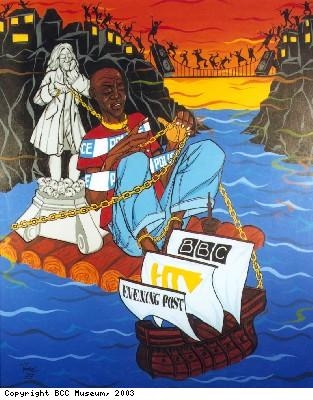
Description:
Painting, Sold Down the River , by Tony Forbes. Tony Forbes wrote about his painting:
_I really love this city. I was born in St Pauls and grew up on a white council estate called Southmead. There are things about Bristol Im proud of, but…
The Festival of the Sea in 1996 was an example of how some of the institutions that run the city have failed to understand the people of Bristol. They celebrated Bristols maritime history and ignored slavery. The centrepiece was the launch of the replica of John Cabots ship, the Matthew. His voyage in 1497 opened the way to the genocide of Native Americans and colonisation.
This festival, encouraged by the Council, funded by big business and hyped by our media, was a slap in the face to the black community and an insult to the intelligence and sensitivity of many Bristolians. It was the weekend that Bristol broke my heart.
The figure on the raft is a portrayal of the way I feel about how I have been treated by authority.The people I grew up with in Southmead have treated me as an equal regardless of colour: its all about respect. In the 1980s, Margaret Thatcher increased the powers of the police.The new sus laws were used against the white working-class as well as ethnic minorities.Black and white kids from the estates were picked up, and beaten up in the back of police vans or taken miles away from home and dumped – some policemen even used to defecate in your shoes and then tell you to walk home.
The Suspension Bridge is about Clifton. Clifton has all the privileges. The people I painted on the bridge are the ones who control and influence the city. I feel they dont give a damn about what happens to anyone else.
When I look at Colstons statue I just think of dead children. I can handle the fact that the statue is there, but theres nothing to say he was a slave trader.It was erected in 1895 by the people of Bristol. Over a century later, isnt it time for Bristolians to express their feelings about todays multi-cultural society?
What I am trying to show in the picture are some of the things I dont want to see happening to the next generation of kids, black or white. We have to live together.
Artists Statement, 1999._
Creator: Tony Forbes
Date: 1999
Copyright: Copyright BCC Museum
Object ID:K5894
Abolition token
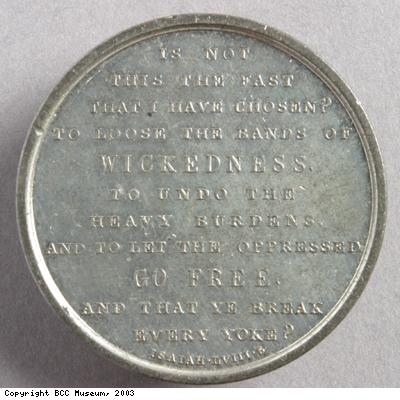
Description:
Abolition token (one side).Token reads Is not this the fast that I have chosen? To loose the bands of wickedness to undo the heavy burdens and to let the oppressed go free, and that ye break every yoke? Isaiah LVIII 6.
Date: 1st August 1834
Copyright: Copyright BCC Museum
Object ID:0.4266
Commemorative Emancipation medallion

Description:
Description: One side of a commemorative medallion, celebrating the abolition of slavery, 1834
Date: 1834
Copyright: Copyright BCC Museum
Object ID:0.4259
Commemorative medallion for extinction of colonial slavery
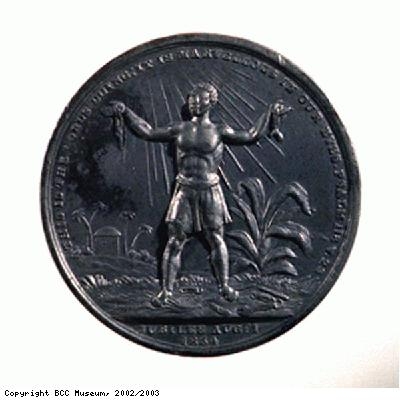
Description:
Commemorative medallion for the extinction of colonial slavery, 1834. The inscription reads: ‘This is the work of the Lord, it is marvellous in our eyes’, a quote from the Bible, Psalm 118.
Date: 1834
Copyright: Copyright BCC Museum
Object ID:O.4119
Counter-claim for compensation
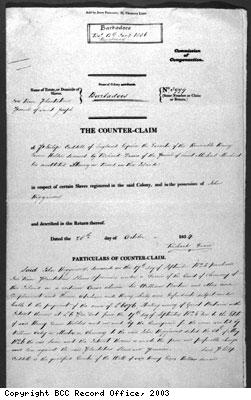
Description:
Document: Counter-claim for compensation, no. 3999, 1834. John Hugginson bought the Ives River Plantation in Barbados in 1825. At Emancipation in 1833, the Hon. Henry Evans claimed a share of the compensation.
The Abolition, or end, of slavery happened in 1834.
The slave owners and their supporters accepted the loss of their property (slaves) in return for compensation (money) from the government. £20 million was paid to slave owners by the British government, as compensation for this loss. Slave owners in Bristol received over £500,000 (worth about £25 million today); a vast sum at that time.
Date: 1834
Copyright: Copyright BCC Record Office
Page 333 of 352 pages « First < 331 332 333 334 335 > Last »

